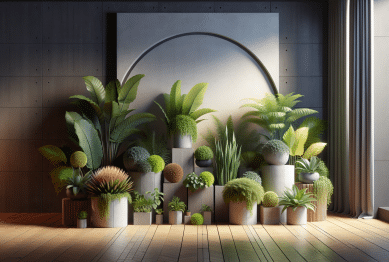Many discover that raised bed gardening transforms both the look and the output of their home gardens. This guide explores how to design, build, and maintain raised beds for effortless and productive home gardening, while addressing common questions around soil, water, and sustainable plant care.
Why Raised Beds Change Home Gardening
Raised bed gardening attracts homeowners with its blend of ease, efficiency, and impressive aesthetic results. Instead of battling tough native soil, raised beds let gardeners create ideal conditions from the ground up—literally. Customizing soil texture and nutrients in a contained space simplifies the process. This approach leads to better drainage and prevents soil compaction, allowing plant roots to thrive in less time compared to traditional ground-level gardens.
There’s another benefit that many overlook: raised beds naturally deter many common weeds and crawling pests. Elevated sides act as a gentle barrier, keeping invasive grasses and some pests at bay. Gardeners often report fewer problems with soil-borne diseases, too, since raised beds allow new, healthy soil each season. As a result, healthy vegetables and vibrant flowers flourish, creating a productive and beautiful focal point in any yard.
Raised beds also make gardening accessible. Bending and stooping become less of an issue, enabling people of varying ages and abilities to enjoy working outdoors. Some even add benches or wheelchair-friendly designs. In smaller spaces like patios or compact city plots, raised beds maximize usable growing area and boost output per square foot. It’s a home gardening innovation that continues gaining fans around the world.
Building the Perfect Raised Bed: Materials and Design
Selecting the right materials for raised bed frames plays a vital role in durability and plant health. Many choose rot-resistant woods like cedar or redwood, which endure years of exposure and look attractive in the landscape. Others opt for stone, brick, or recycled composite lumber, which resists decay and sometimes requires less maintenance. Whatever the material, ensure it’s free from chemical treatments that could leach into your garden’s soil.
Bed depth also matters—a minimum of 6 to 12 inches is usually recommended. Deeper frames offer more root room for nutrient-hungry crops, such as tomatoes or carrots. Length and width are flexible, but aim for beds no wider than four feet. This way, most gardeners can reach the center from either side without stepping on the soil and compacting it. Strategic placement, such as orienting beds north-south, can optimize sunlight exposure and air circulation.
Many gardeners add hardware cloth at the bottom for extra protection from burrowing rodents. Lining the sides with breathable landscape fabric can also help keep roots cool and prevent soil erosion. Consider integrating pathways around beds using mulch or gravel for easy access and better water drainage. Raised bed design can be customized to suit both the gardener’s needs and the style of the yard, from sleek modern boxes to rustic stacked stone.
Choosing the Right Soil Mix for Productive Beds
The secret to healthy raised bed gardening is the soil mix. Unlike native soil, you control every ingredient. Many successful beds use a blend of high-quality topsoil, compost, and materials like coconut coir or peat moss for structure. This custom mix ensures excellent drainage, air pockets for roots, and nutrient reservoirs. Quick-draining soils also warm up faster in spring, so planting can begin earlier in the season.
Regularly amending raised beds with organic matter like well-rotted compost or leaf mold keeps soil fertile and alive. Earthworms and beneficial microbes thrive in these environments, further breaking down nutrients for plant use. For advanced gardeners, incorporating worm castings or natural mineral amendments (like greensand or rock phosphate) can help replenish specific micro-nutrients depleted over time. Refresh soil annually or between plantings for continued results.
It’s also wise to test your soil mix every couple of years. Home testing kits quickly reveal pH and major nutrient levels, highlighting any excesses or deficiencies. This data helps gardeners tweak their mix, ensuring lush growth year after year. With proper care, healthy raised bed soil becomes the invisible engine powering lush vegetables, herbs, and flowers even for novice gardeners.
Irrigation and Water Strategies for Raised Beds
Because raised beds drain efficiently, watering practices need adjustment for optimal plant growth. Overhead watering with a hose is easy, but often less efficient—especially on hot days when water evaporates quickly. Installing soaker hoses or drip irrigation systems delivers steady moisture directly to plant roots, reducing waste and helping prevent fungal diseases by keeping foliage dry.
Mulching the surface with straw, leaf mulch, or wood chips conserves moisture and helps regulate soil temperature. During especially hot or dry periods, mulch can make the difference between failure and abundant harvests. Consistent, even moisture is key for crops like tomatoes and lettuce, which can bolt or crack if subjected to sudden drought or heavy soaking.
Testing soil moisture with a simple finger check or inexpensive sensor can help avoid overwatering—a common issue with new raised bed gardeners. Rainwater harvesting is another possibility, providing a sustainable source of irrigation for the eco-conscious. Matching your watering routine to local climate and plant types helps ensure that your raised bed thrives through every season.
Plant Selection and Companion Planting in Raised Beds
Choosing what to grow in raised beds opens endless possibilities, from compact salad greens to deep-rooted vegetables and even fragrant pollinator flowers. Crops such as radishes, lettuce, and spinach love the quick-warming soil, while root vegetables appreciate the loose, deep earth. Perennial herbs and edible flowers can provide both beauty and culinary value, making the raised bed a focal point for the whole garden.
Companion planting—a gardening approach that matches mutually beneficial plants—often thrives in raised beds. Marigolds deter nematodes and pests, while basil and tomatoes help each other grow. Tall peas or beans, when planted along one side, can act as living trellises and offer partial shade for sun-sensitive plants. This approach maximizes yield, reduces pest pressure, and creates microhabitats for helpful insects.
Rotating crops and mixing plant families from year to year reduces disease buildup and maintains soil health. Raised beds allow easy record-keeping and experimentation. Many gardeners create planting plans or use apps to track what’s growing where. Experimenting with new vegetable varieties or heirloom seeds is often easier in the controlled environment a raised bed provides.
Sustainable Practices for Long-Term Raised Bed Success
Sustainability is integral to modern home gardening. Raised beds naturally lend themselves to organic practices that protect both plants and the environment. Avoid synthetic fertilizers and pesticides whenever possible, in favor of compost, green manure, or natural pest deterrents like row covers and neem oil sprays. Over time, this approach builds healthier soil and more robust plants with fewer garden interventions.
Integrating pollinator borders or native plant strips around raised beds enhances biodiversity and supports local wildlife. These simple additions invite bees, butterflies, and beneficial insects, increasing pollination and warding off garden pests. Collecting rainwater for irrigation or creating a closed nutrient loop with home composting adds another layer of ecological stewardship to the raised bed experience.
Periodic maintenance—such as topping up soil, checking bed frames for wear, and keeping pathways clear—ensures the raised bed continues to deliver abundant harvests year after year. Sustainable raised bed gardening requires some effort, but the reward is a flourishing home landscape, packed with fresh food and flowers, that aligns with modern eco-conscious values.
References
1. University of Minnesota Extension. (n.d.). Raised Bed Gardening. Retrieved from https://extension.umn.edu/planting-and-growing-guides/raised-bed-gardens
2. Royal Horticultural Society. (n.d.). Raised beds. Retrieved from https://www.rhs.org.uk/soil-composts-mulches/raised-beds
3. North Carolina State University Extension. (n.d.). Gardening in Small Spaces: Raised Beds. Retrieved from https://content.ces.ncsu.edu/gardening-in-small-spaces-using-raised-beds
4. University of Georgia Extension. (n.d.). Raised Beds vs. In-Ground Gardens. Retrieved from https://extension.uga.edu/publications/detail.html?number=C1027
5. Penn State Extension. (n.d.). Soil Mix for Raised Beds. Retrieved from https://extension.psu.edu/soil-mix-for-vegetable-gardens
6. University of California Agriculture and Natural Resources. (n.d.). Sustainable Home Gardening. Retrieved from https://ucanr.edu/sites/gardenweb/General/raisedbeds/









